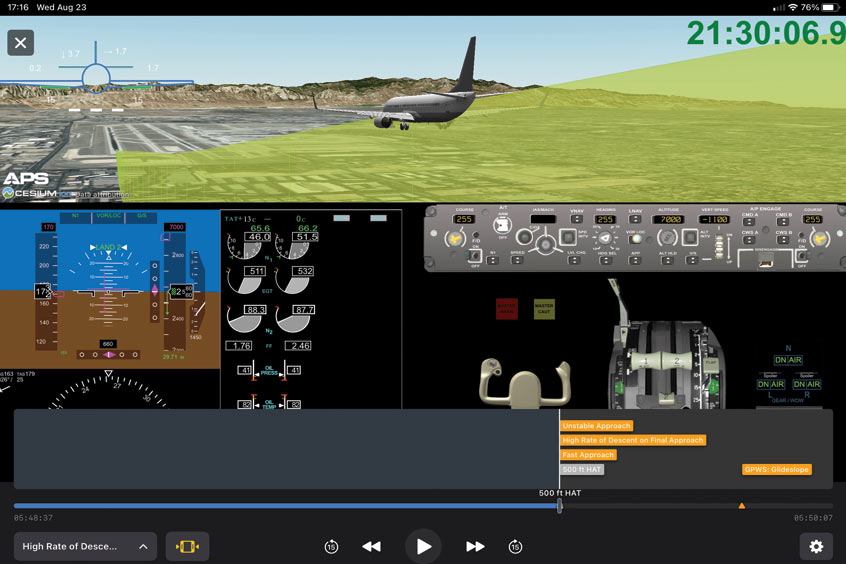Why visit ACE ’25?

The number of commercial and business pilots using FlightPulse recently topped 40,000 according to GE Aerospace, SaaS (Software as a Service), and is on track to surpass 50,000 pilots in 2025. The software platform has experienced strong growth over the past year, as new app features have more recently been added. These include a 3D animation module that matches a pilot’s flight deck experience; a Preflight module to support pre-departure planning; and, most recently, a Home module to allow airline administrators to distribute in-app announcements to their pilots.
General manager Andrew Coleman says the new app features are a big part of why more and more pilots are signing up for FlightPulse: “FlightPulse has always been an app for pilots that is informed by pilots, and our team continues to find innovative ways to expand the data and insights pilots can gain to help them fly more safely and more sustainably. We’re thrilled to have recently exceeded the 40,000 mark and are setting our sights on 50,000 pilots in the not-to-distant future.”
Coleman adds that the level of pilot engagement with FlightPulse has been very strong. The app is currently averaging about 3,000 pilots logging in every day and just over 20,000 pilots logging in every month. On any given day, FlightPulse processes an average of 2.5 million flights to display results for pilots.
Coleman continues: “The strong engagement we are seeing with pilots illustrates the valuable insights they are deriving from the app. The way pilots use FlightPulse is analogous to how a runner might use a fitness watch to improve their run times, or an individual using a weight loss app to be healthier. It’s an app they can access on their iPads to become better pilots.”
Mary Harshbarger, aviation safety programme senior manager at Clay Lacy Aviation, whose pilots have been using FlightPulse, credits the app with contributing to both the safety and overall improvement of their flight operations. She says: “FlightPulse is a powerful safety and continuous improvement tool. We are now confidentially putting our FOQA data in the hands of those who can best use it, the pilots themselves. They not only have access to their own data, but also to de-identified industry data, providing a real-time snapshot of their performance compared to the industry. With the power behind that industry data, this also becomes a tool that helps them prepare for upcoming flights by highlighting the most common events at both their destination and departure airports.”
Coleman explains that FlightPulse includes pre- and post-flight modules that provide key safety and sustainability insights about flight paths for pilots, both familiar and unfamiliar, to help them improve how they fly. “We have found that pilots really like being able to study flight routes they are unfamiliar with or haven’t flown in a while,” she adds. “Just like when you’re driving a car, we always seem to drive better when the roads and traffic patterns are more familiar to us on a given trip or outing.”
The Preflight module was just made available to business jet customers a few months ago. Through this new module, pilots can review de-identified historical flight data to become more familiar with the airspace, seasonal weather conditions, air traffic controller tendencies and pertinent safety data for airports that are less familiar to them. Because FlightPulse serves as an extension of GE Aerospace’s C-FOQA programme for the business jet community, operators can leverage anonymised safety data-sharing from across the industry to learn from others in cases where they are planning routes they’ve never operated before.